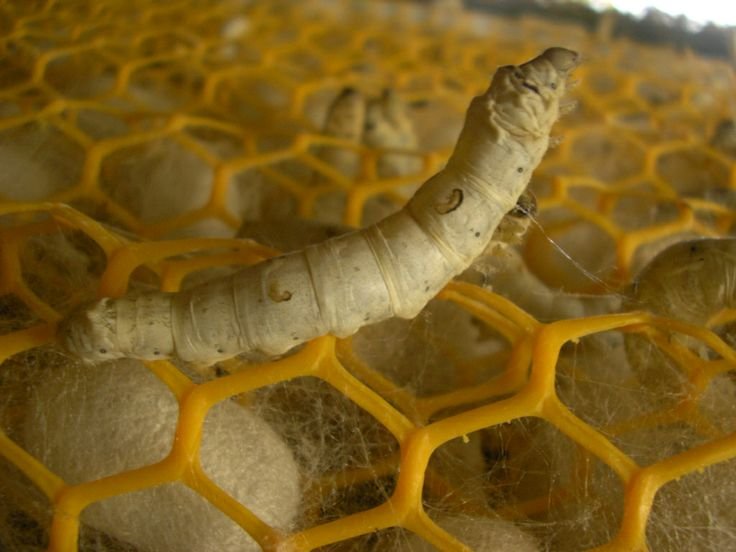
Imagine you’re sending a package of fragile glassware instead of smooth silk worms. You’d want to ensure they’re cushioned, kept at the right temperature, and protected from harsh conditions. That’s the same mindset you need for these little critters. In this guide, we’ll cover the best practices for preparing, packaging, and transporting silkworms, ensuring your journey is smooth and successful.
Understanding Silkworm Physiology
Before diving into transportation, let’s talk a bit about the silkworms themselves. You might be wondering why it’s so crucial to understand their needs. Silkworms are sensitive creatures that rely heavily on their environment. They thrive on a diet of mulberry leaves and need specific temperature and humidity levels.
Here’s the thing: when you’re moving them, any drastic change can stress them out or, worse, make them sick. So, knowing their ideal conditions—around 70°F to 85°F (21°C to 29°C) and high humidity—helps guide your transportation plan. It’s like preparing a cozy little hotel room for them on the go. If you wouldn’t want to stay in a freezing garage, neither do they!
Preparing Silkworms for Transport
The first step to a successful journey is preparing the silkworms. You’ll want to harvest them at the right time, usually just before shipping, when they’re still active and healthy. But don’t forget to give them a good meal of fresh mulberry leaves before their trip. It’s like packing snacks for a long ride!
Next, it’s vital to assess how many silkworms you’ll be transporting. Overcrowding is a common mistake that can lead to stress and even death. A good rule of thumb is to limit the number to ensure they have enough space to move without getting squished. Think of it as making sure everyone has enough elbow room in the car!
Choosing the Right Packaging Materials
Now that you have your silkworms ready, let’s talk about packaging. The packaging is like the car you choose for that road trip. You want something that will keep them safe, comfortable, and secure.
For transporting silkworms, you can use breathable containers made of cardboard or plastic with holes for ventilation. This allows fresh air to circulate while keeping them safe from external disturbances. Inside, you may want to line the bottom with moist paper towels to maintain humidity. Just make sure it’s not too wet—drowning them isn’t the goal!
Here’s a tip: always label your package with “Live Animals” or “Silkworms” and include care instructions. This will alert anyone handling the package to treat it with extra care.
Finding the Right Transport Method
Choosing how to transport your silkworms is another crucial step. If you’re using a personal vehicle, great! You can control the temperature inside. However, if you’re shipping them, consider using an overnight courier service, which is your best bet for keeping them from being in transit too long.
If you can, aim for a direct route without too many stops. Less handling means less stress for your silkworms. Here’s a quick checklist for transport methods:
- Opt for temperature-controlled shipping if available.
- Use insulated packaging to maintain stable conditions.
- Plan your shipment around weekends and holidays to avoid delays.
Maintaining Optimal Conditions During Transport
During transport, it’s crucial to monitor the conditions inside the container. If you’re traveling personally, make sure to keep the car temperature within that sweet spot of 70°F to 85°F. If you’re sending them off with a courier, check in to confirm they’re following similar protocols.
Having a small thermometer inside their container can be a lifesaver. It helps track temperatures, ensuring conditions are just right. You really want to avoid significant fluctuations. Just like you wouldn’t want to go from a warm beach to a freezing mountain in minutes, silkworms feel the same discomfort, which could jeopardize their health.
Post-Transport Care for Silkworms
Congratulations! You’ve successfully transported your silkworms. Now, it’s time for post-transport care. This step is just as important as the journey itself. Upon arrival, gently open the container and assess their condition. Are they active? If they look sluggish, they might need some immediate care.
Start by placing them into a new setup with fresh mulberry leaves and ensure they have proper humidity levels. If you’ve traveled a long distance, you might want to gradually acclimate them to their new environment. It’s like letting them stretch their legs after a long trip!
Additionally, keep an eye on them for the first few days. If they seem off, you can provide a little extra warmth or adjust their diet to help them recover from the journey.
Common Mistakes to Avoid When Transporting Silkworms
Even seasoned silkworm transporters can make mistakes. It’s natural! Here are some common issues to watch out for:
- Overcrowding: Too many worms in one container can lead to stress and injury.
- Ignoring Temperature: Too hot or too cold can easily stress out your silkworms.
- Poor Packaging: Using non-breathable containers can suffocate them.
By being mindful of these pitfalls, you can ensure a smooth journey for your silkworms. It’s all about keeping their needs front and center throughout the process.
In conclusion, transporting silkworms safely over long distances may seem daunting, but with the right planning, attention to detail, and a little love, you’ll ensure they arrive healthy and happy. Treat them well on their journey, and in return, you might be rewarded with beautiful silk one day!

